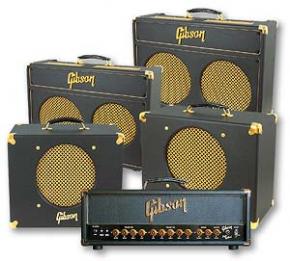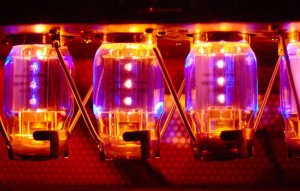
Categories
- Advanced Guitar (7)
- Beginner Guitar (22)
- Contest (7)
- Course Walk Through (8)
- Fingerstyle (3)
- Gear (5)
- Gibson (9)
- Gibson's Learn & Master Guitar (74)
- Guest (5)
- Guitar Gathering (8)
- Guitar Tips (34)
- Guitar Video (22)
- Guitarists (9)
- In-Studio (1)
- Intermediate Guitar (17)
- Maintenance (3)
- Mobile App (4)
- Monthly Video Tip (21)
- Playing Technique (5)
- Sale (4)
- Student Profile (22)
- Student Support Forum (17)
Archives
- April 2025(1)
- March 2025(1)
- February 2025(1)
- January 2025(1)
- December 2024(1)
- November 2024(1)
- October 2024(1)
- September 2024(1)
- August 2024(1)
- July 2024(1)
- June 2024(1)
- May 2024(1)
- April 2024(1)
- March 2024(1)
- February 2024(1)
- January 2024(1)
- December 2023(1)
- November 2023(1)
- October 2023(1)
- September 2023(1)
- August 2023(1)
- July 2023(1)
- June 2023(1)
- May 2023(1)
- April 2023(1)
- March 2023(1)
- February 2023(1)
- January 2023(1)
- December 2022(1)
- November 2022(1)
- October 2022(1)
- September 2022(1)
- August 2022(1)
- July 2022(1)
- June 2022(1)
- May 2022(1)
- April 2022(1)
- March 2022(1)
- February 2022(1)
- January 2022(1)
- December 2021(1)
- November 2021(1)
- October 2021(1)
- September 2021(1)
- August 2021(1)
- July 2021(1)
- June 2021(1)
- May 2021(1)
- April 2021(1)
- March 2021(1)
- February 2021(1)
- January 2021(1)
- December 2020(1)
- November 2020(1)
- October 2020(1)
- September 2020(1)
- August 2020(1)
- July 2020(1)
- June 2020(1)
- May 2020(1)
- April 2020(1)
- March 2020(1)
- February 2020(1)
- January 2020(1)
- December 2019(1)
- November 2019(1)
- October 2019(1)
- September 2019(1)
- August 2019(1)
- July 2019(1)
- June 2019(1)
- May 2019(1)
- April 2019(1)
- March 2019(1)
- February 2019(1)
- January 2019(1)
- December 2018(1)
- November 2018(1)
- October 2018(1)
- September 2018(1)
- August 2018(1)
- July 2018(1)
- June 2018(1)
- May 2018(1)
- April 2018(1)
- March 2018(1)
- February 2018(1)
- January 2018(1)
- December 2017(1)
- November 2017(1)
- October 2017(1)
- September 2017(1)
- August 2017(1)
- July 2017(1)
- June 2017(1)
- May 2017(1)
- April 2017(1)
- March 2017(1)
- February 2017(1)
- January 2017(1)
- December 2016(1)
- November 2016(1)
- October 2016(1)
- September 2016(1)
- August 2016(1)
- July 2016(1)
- June 2016(1)
- May 2016(1)
- April 2016(1)
- March 2016(1)
- February 2016(1)
- January 2016(1)
- December 2015(1)
- November 2015(1)
- October 2015(1)
- September 2015(1)
- August 2015(1)
- July 2015(1)
- June 2015(1)
- May 2015(1)
- April 2015(1)
- March 2015(1)
- February 2015(1)
- January 2015(1)
- December 2014(1)
- November 2014(1)
- October 2014(1)
- September 2014(1)
- August 2014(1)
- July 2014(1)
- June 2014(1)
- May 2014(1)
- April 2014(1)
- March 2014(1)
- February 2014(1)
- January 2014(1)
- December 2013(1)
- November 2013(1)
- October 2013(1)
- September 2013(1)
- August 2013(1)
- July 2013(1)
- June 2013(1)
- May 2013(1)
- April 2013(1)
- March 2013(1)
- February 2013(1)
- January 2013(1)
- December 2012(1)
- November 2012(1)
- October 2012(1)
- September 2012(1)
- August 2012(1)
- July 2012(1)
- June 2012(1)
- May 2012(1)
- April 2012(1)
- March 2012(1)
- February 2012(1)
- January 2012(1)
- December 2011(1)
- November 2011(1)
- October 2011(1)
- September 2011(1)
- August 2011(1)
- July 2011(1)
- June 2011(1)
- May 2011(1)
- April 2011(1)
- March 2011(1)
- February 2011(1)
- January 2011(1)
- December 2010(1)
- November 2010(1)
- October 2010(1)
- September 2010(1)
- August 2010(1)
- July 2010(1)
- June 2010(1)
- May 2010(1)
- April 2010(1)
- March 2010(1)
- February 2010(1)
- January 2010(1)
Care and Feeding of Tube Amps ~ Treat Her Right!
Sunday, December 12, 2010Technology marches on... but when it comes to guitar tone, the customers of technology have consistently preferred Old School over New Tech. Ahh, the lusty tube amp. Something about the raw, warm tone created by those glass cylinders of glowing orange magic has kept amp designers (and their guitar-playing customers) spell-bound. The grit, the grime, the grease, the gravel, the growl of a "real" tube amplifier touches the soul like no other sound.

If you own a tube amp, you want to treat her right. She's good for what ails you as a guitar player, but likewise, you have to be good and make sure nothing ails her. The care and feeding of tube amps (and more specifically, the tubes IN the amp) is a most important consideration.
First, let's get warmed up. If you work out, you've probably discovered the importance of "stretching". There's an equivalent in your guitar amp's world. Most tube amps now sport "standby" switches that allow you to turn the amp on without slamming the tubes with a jolt of electrical power before they've had a chance to get warm (slowly). Put the amp on "standby" before you even turn it on. This warms up the plates inside the tubes allowing them to "wake up" a bit before they're put to work. Don't get me wrong... jolting them awake can be done again and again, but it hurts the tube's longevity.
Second, be gentle! Solid state amps (amplifiers made with transistors rather than tubes) can be bumped and mis-treated without many consequences. But Ms. Tube Thang has to be treated with "respeck". Tubes in a jostled amp can loosen and/or get damaged by bumps/shock. This care usually just means that you should handle the amp yourself rather than leaving it to the care of volunteer "roadies".
Finally, only change them when you have to. First, there are the "Power" tubes (these are the larger ones). They will likely be the most often changed tubes, because they handle MUCH more electrical energy than the other tubes in your amp. This is like changing tires from time to time... they just wear out.
You'll notice the need for changing by one of several things: Lower power output (not quite as loud as before...like having to turn your amp up to 6 to get the same volume as you got at 4); Or the tone sounds a bit "squashed" or thin or less "present" than before.
As I type this I realize that I might be describing symptoms of hearing loss... oh my!
If your amp is making weird pops or squeals or electronic noises, you're probably looking at power tube failure soon. If you have to replace tubes, save yourself some trouble and just buy exactly what was in there before. Changing TYPES of tubes will likely destroy your amp, so don't even think about it. If you keep the same TYPE, but change brands, you'll have to do something called "re-biasing" which is done by a technician.

There are companies that provide replacement tubes (like Ruby or Groovetubes), but again, you'll have to "re-bias" them to match your amp's other electronics. If you consistently stay with the same brand when you do future replacements, you won't have to re-bias again.
It's easy to tell whether the tubes are correctly biased for your amp. Just look at the color of the tubes when they're warmed up and operating. They should be glowing soft orange or amber. If they are too white or light yellow, they're being overdriven and this will harm your amp. If they are blue or purple, they are being under-driven. This won't hurt your amp, but will give you a wimpy tone.
The main thing is to just expect your tube amp to be a bit more finicky than a solid state counterpart. It makes use of heat and space and so is more subject to magical powers than transistors.
 Support Forum
Support Forum